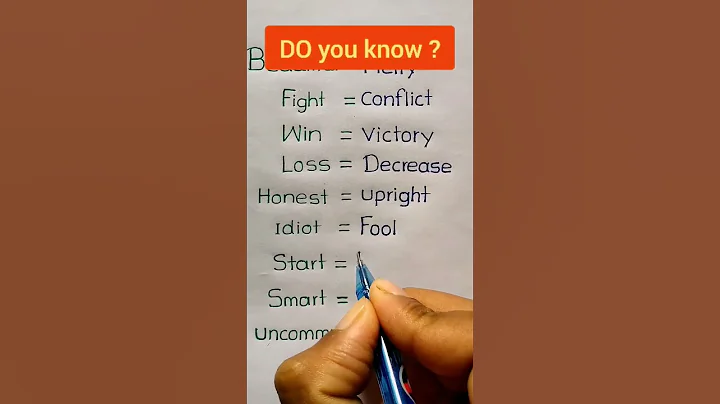parents with children probably have heard this passage about their children's learning: grades 1 and 2 are not distinguished from each other, grades 3 and 4 are polarized, grades 5 and 6 are in heaven and earth.

This passage actually talks about the changes in the child's academic performance in six years of elementary school. Generally speaking, most children's grades are not much different in the first and second grades, they are just comparable and cannot distance themselves.
When the child is in the third and fourth grades, parents will find that some children's grades are still maintaining good grades, while some children's grades show a very obvious downward trend. This is the beginning of the polarization of children's grades.

And in the fifth and sixth grades, this polarization phenomenon is more obvious. Good grades will be better, and poor grades will be worse, which is a huge difference.
This is not an alarmist statement. As it turns out, most children's grades will decline when they reach the fifth and sixth grades. This is related to what children learn. After all, as the grade increases, the content children learn more and more, and the difficulty increases at any time. If the child has not laid a solid foundation before, he will be easily left behind.

However, the main reason for the decline in children's grades is that children have not cultivated good learning habits since childhood. Because learning habits can not only reflect the child’s learning status, but also directly affect the child’s academic performance.
If you want your child to learn well, you must cultivate three habits from an early age and lay a good foundation for your child’s learning habits.
First habit: the habit of writing well
Children in lower grades, especially first graders, have relatively less homework and have a lot of free time. When children do their homework, we should pay attention to cultivating their children's habit of writing well.

At this time, the child has just started writing with a pen. It is the easiest opportunity to form a correct pen-holding posture, master the strokes of writing, and write a good-looking shape.
The so-called "words are like the person", and whether the child's handwriting is neat will also affect the child's test scores, because each test paper has a score on the face, and the child's answers neatly and his handwriting is clear, which can also improve the child's score to a certain extent. Especially for Chinese, neat fonts will give children a good score for their compositions.

So we should not urge our children to hurry up, but leave time to write the words in a stroke by stroke. Cultivating children's habit of writing well requires patience and encouragement from parents, and even more so, parents' affirmation.
If you want your child to write good characters, you can prepare some rice-shaped or square-shaped books for your child, so that your child can practice according to the new characters in the textbook, or you can prepare some calligraphy and calligraphy practice for your child.
When the child is in the upper grade, he has no time to practice calligraphy, so the child must start from the lower grade.
The second habit: the habit of self-checking
Many parents will check the homework for their children after they finish their homework. Although this represents parents' concern for their children's learning, it also creates children's sloppy to a certain extent.

Because the child understands that parents will point out their mistakes, it doesn’t matter even if they do it wrong. If the child is usually careless in doing homework, how can he get serious during the exam?
So I give parents a suggestion: Return the right to check homework to the child and let the child check himself.
Every time the child finishes his homework, he asks the child to check it first to ensure that there are no basic errors. After the child has finished his self-examination, he will leave it to the parents for examination. This will not only improve the child's seriousness in homework, but also help the child find his own shortcomings and impress his children. In this way, the next time I do the test, the child will pay attention to reducing similar mistakes.

Let children check their homework by themselves, which is actually an improvement of their serious attitude towards their children and also reduces their dependence on their parents.
The third habit: reading habits
Let’s first look at the requirements for reading volume in each grade of primary school students.

It can be seen from the picture that starting from the first grade, the child has read a lot, and it is required to read at least 20,000 words per semester, no less than 150 words per day.
Maybe most parents think that it is just 150 words a day? It's easy to complete. The difficulty of lies in sticking to every day.
So we need to arrange a fixed time for children to read extracurricularly every day. The reading content can start from the aspects that children are interested in. For example, picture book story content is easier to attract the interests of first and second grade children.

But this is just a transitional stage. When the child has a good reading habit, we must expand the reading scope of the child based on the child's learning situation and carry out targeted reading.
Teachers will also recommend some related reading books. Generally speaking, children in lower grades have a small amount of reading and simple content, while children in higher grades have a large amount of reading and it is difficult to read. If you want your child to study well, you must cultivate your child’s reading habits from an early age.
In the next article, I will introduce how to choose the right reading books for primary school students. Welcome to follow and read.

In short: All children’s learning habits must be cultivated from the lower grades, that is to say, as soon as the child enters the first grade, we parents must pay attention to the cultivation of their children’s learning habits.











